Grow with a Pro, February edition
18th Nov 2024
The last 2 months = neglect and complete replanting
The last few months I’ve been dealing with a severe calf strain which has affected my ability to get to the glasshouse (it’s located down a flight of stairs and a small bank). I made unfortunate but necessary decision to abandon it and needless to say it became an almighty overgrown mess.
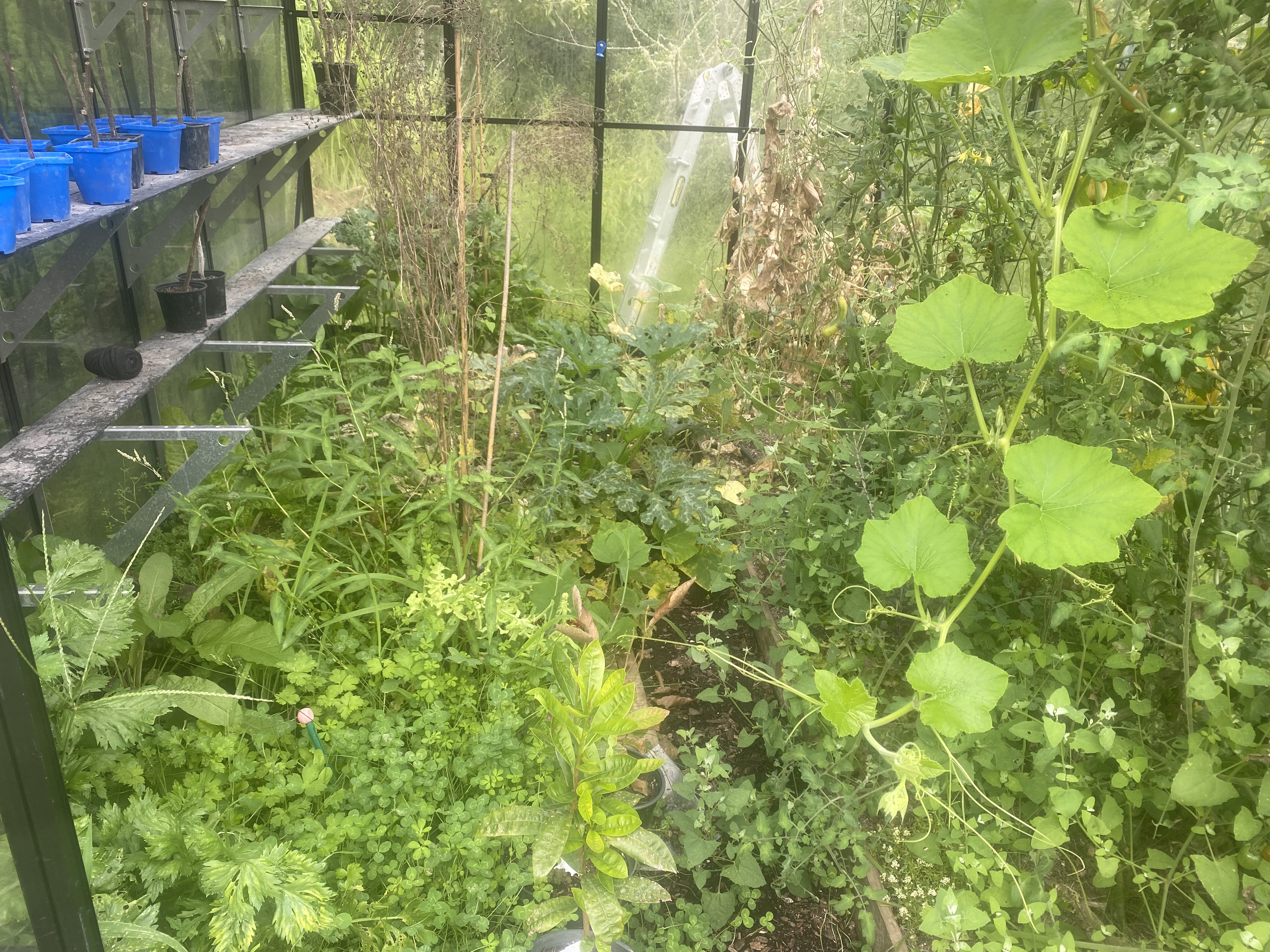
Overgrown mess after 2 months of neglect
This did however prompt me to clear everything out, add more compost + worm castings and completely replant. I’ve taken a different approach this time and planted at high density. My thinking is plants can shade the ground rather than the mulch which becomes difficult to apply and manage when planting at high density. I pulled out clover too that had seeded itself and thought it would be interesting to include a photo where you can see the root nodules that fix nitrogen.
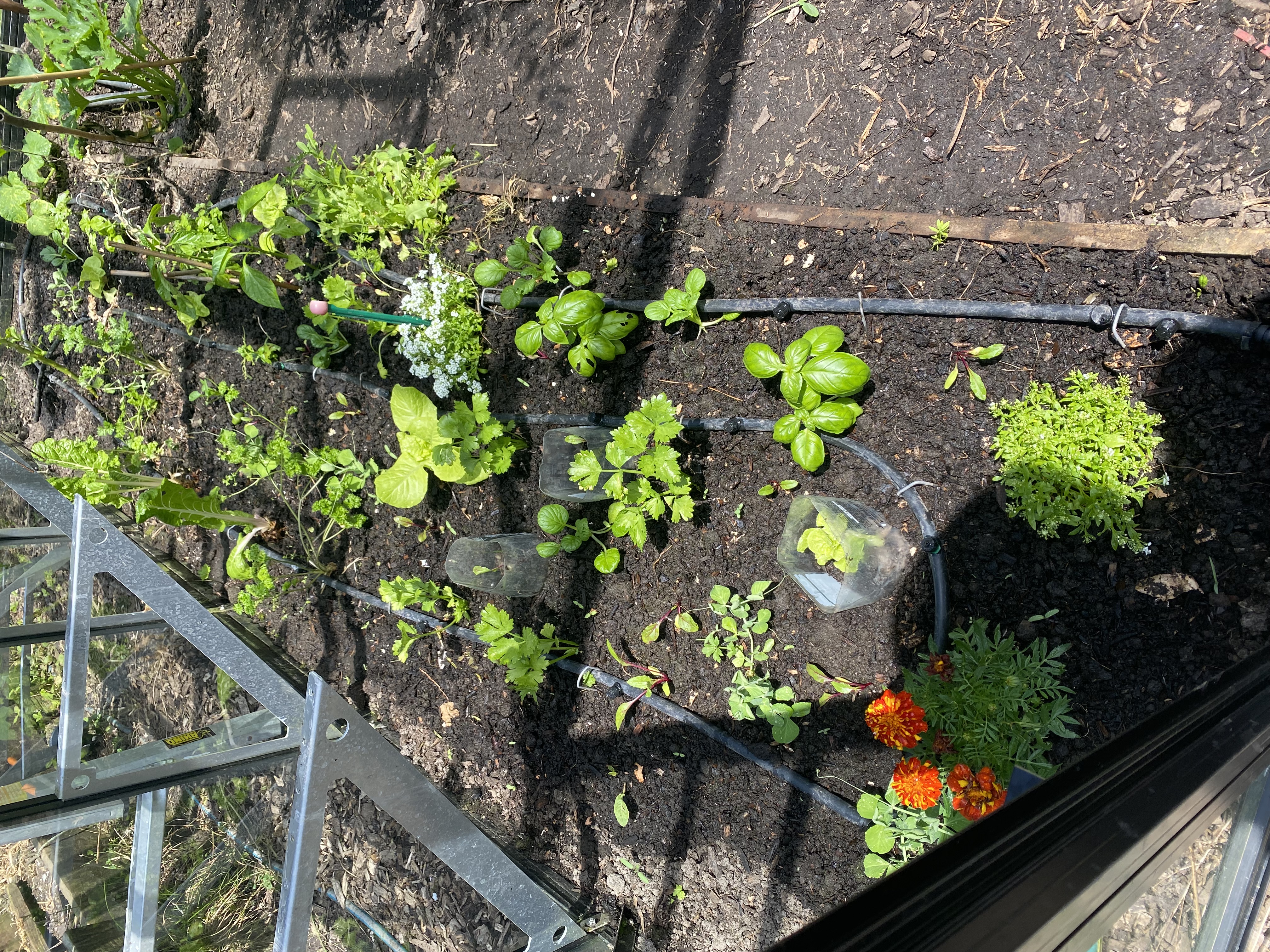
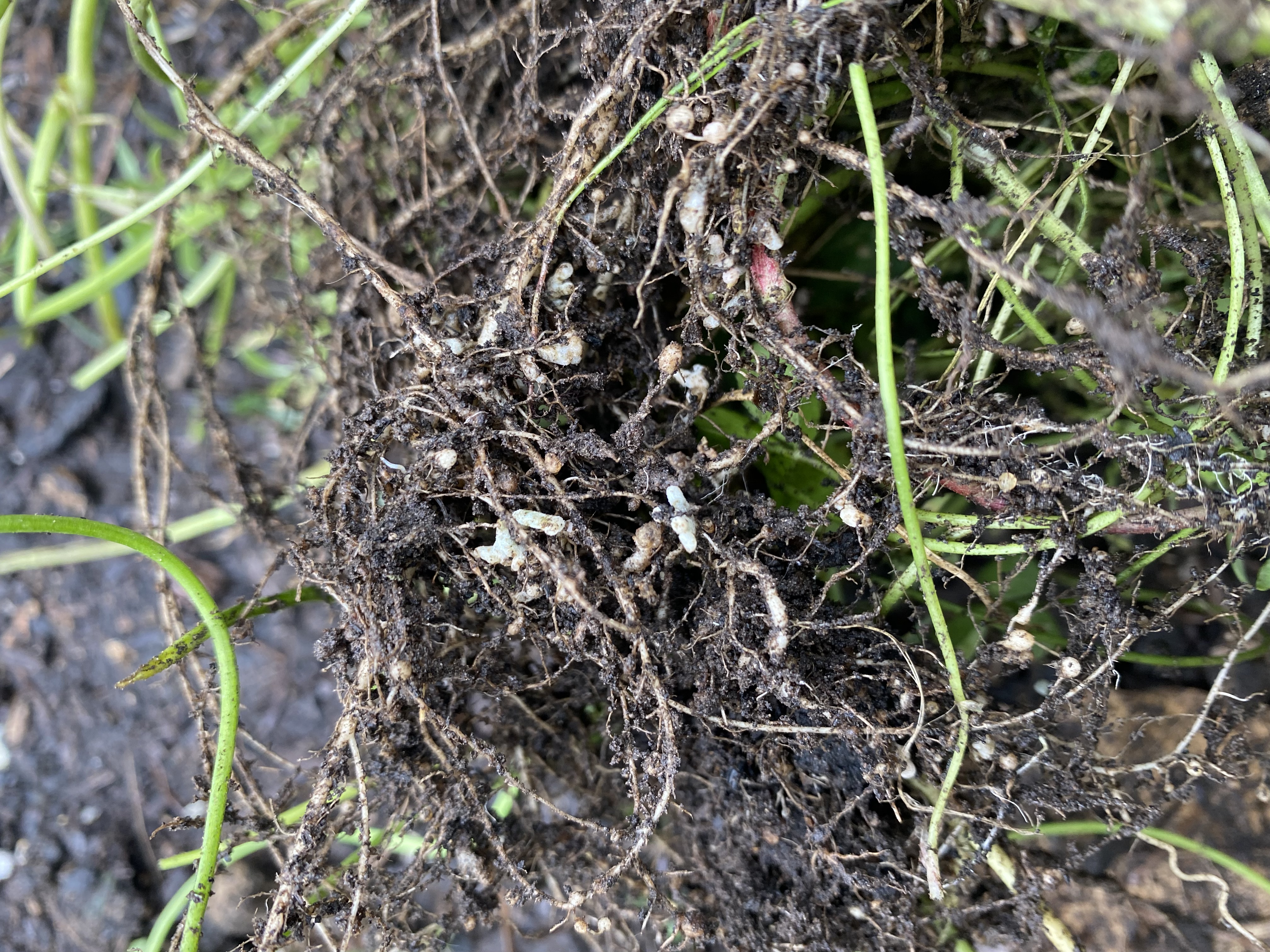
Higher density planting this time Root nodules in red clover
I’ve planted a cucumber and tomato (at the end of January which is a bit late but given how warm it’s been I’m fairly confident these will produce before the cooler weather comes). The tomato is from kings and ‘grafted’ something I’ve never seen before in a tomato. Algae growth on glass panels What has been very problematic is the lack of sunshine (we’ve averaged 5 hours a day for all of January), it’s been pretty awful weather with a huge amount of rain and one consequence of this is algae growing on the glass panels (mostly on the inside) which has furthered reduced the amount of light getting to the plants. I wiped down the glass panels to clear them of algae (just using elbow grease and a squeegee). I am waiting on a mesh screen door which should help a lot with ventilation and reduce this problem going forward.
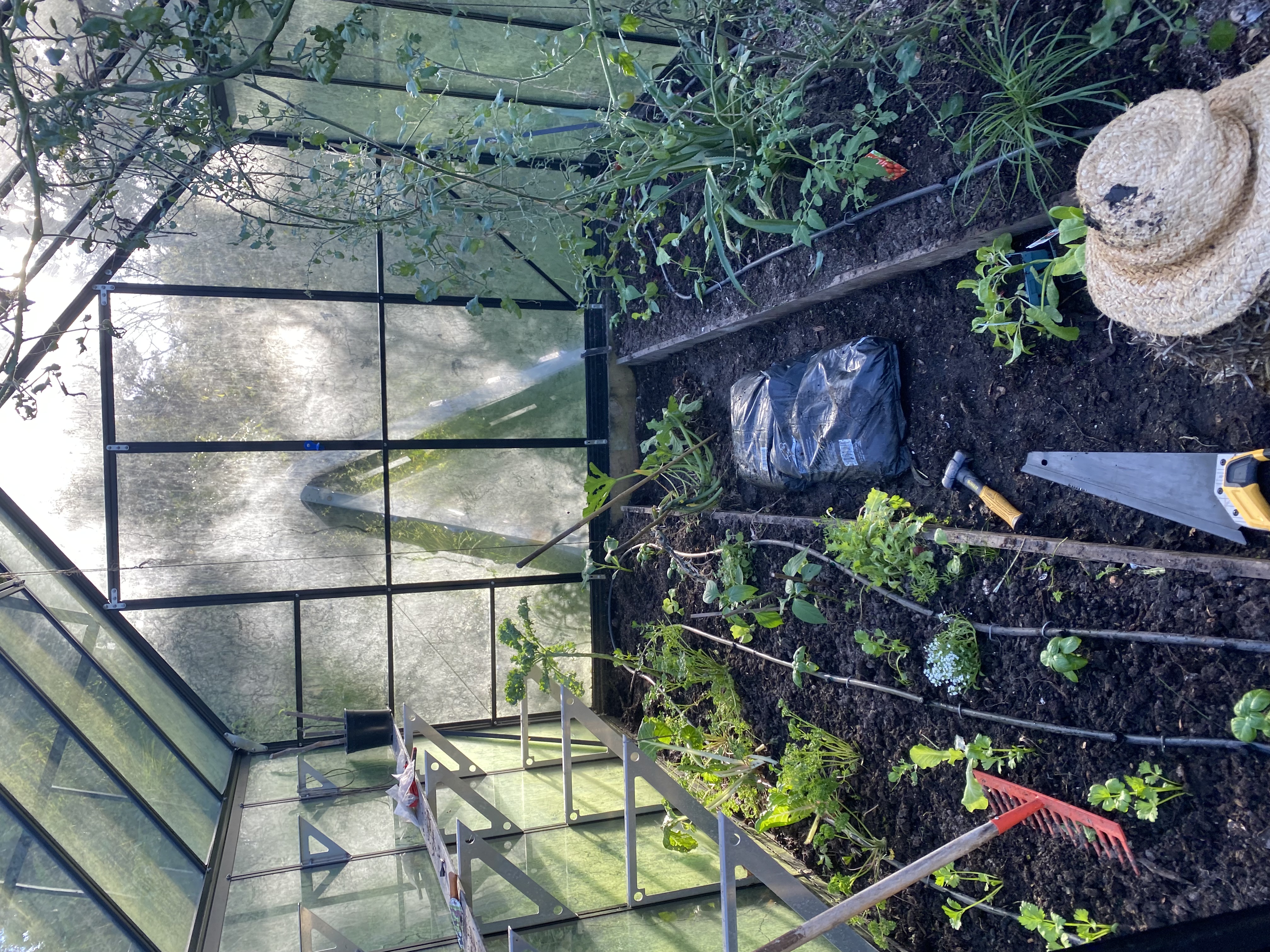
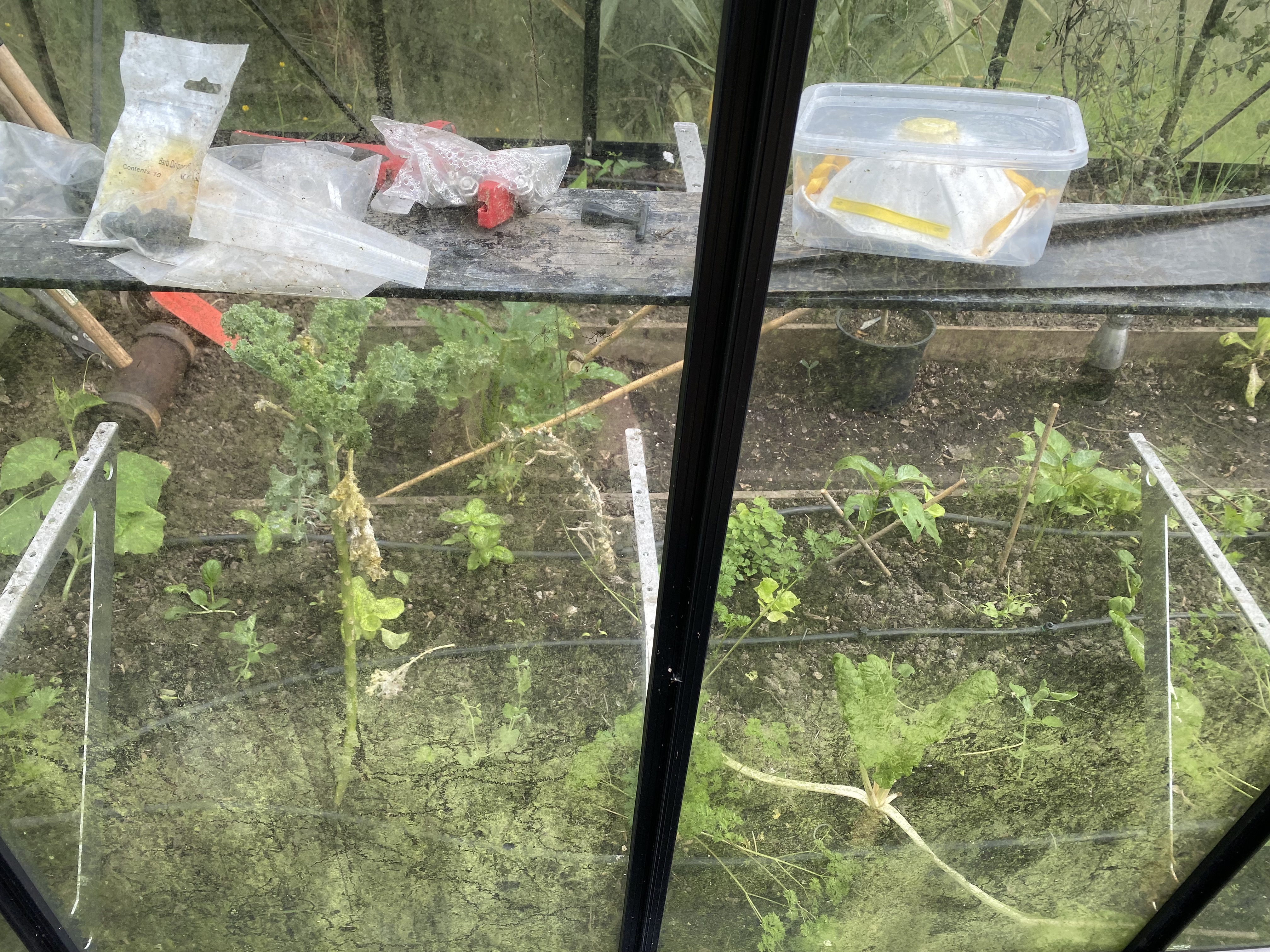
Close up of algae on inside of glass panel Algae pretty much everywhere
Here'svideo that shows hoverfly larvae at work
BT for caterpillar control
BT or ‘bacillus thuringiensis’ is the quickest solution however for caterpillar control. It’s a naturally occurring soil bacteria that is toxic to caterpillars. It’s very effective and we used this regularly when encountering outbreaks at Hohepa farm. It’s preferable of course to create an environment where hoverfly and ladybug larvae + parasitic wasps are doing the work but sometimes a biological control is also needed. You can buy BT from Seacliff Organics (as well as other places). Here’s a link: https://seaclifforganics.nz/products/bacillus-thu...
Please subscribe below to get notified of our next post!
